Have you ever experienced digital ad fraud?
Are you searching for Best Ad Fraud Detection companies to block fraudsters from exploiting your marketing efforts?
If your answer is Yes then you have landed at the right place.
Ad fraud is not a new phenomenon, it is a continuing issue for the ad tech sector that demands increasing attention given the scale at which ad fraud is occurring in advertisers’ and marketers’ inventories.
Digital ad fraud is the deliberate misrepresentation or manipulation of engagement metrics in order to generate fake traffic and impressions and negatively impact click-through rates and revenue creation.
With programmatic advertising functioning as a useful tool for advertisers and publishers to participate in the automated marketing of the new digital era, ad fraud is nearly unavoidable, with professionals of all sizes at danger of colluding with criminal actors in some ways.
In this article, we will walk you through the various layers of ad fraud and the best ad fraud prevention tactics, using the top ad fraud detection tools to prevent fraudsters from exploiting your marketing efforts.
What is Ad Fraud?
Ad fraud is the practice of purchasing and publishing advertisements on dubious websites, as well as fabricating impressions, clicks, and instals in an effort to take advantage of mobile advertising technologies and create fraudulent money.
Mobile ad frauds come in many different forms and aren’t always simple to spot. However, the idea itself is widely used by hackers and often mixes attribution fraud with identity fraud.
In order to reap financial rewards, fake activity and metrics, such as traffic and data events, are disguising real user behaviour. Ad fraud often involves the use of bots to attempt to alter the flow of the normal advertising process, from advertisers to target users.
The majority of online ad fraudsters utilise automated bots to click on advertisements frequently. By doing so, the advertisers’ revenue increases, and the fraudulent publishers benefit by receiving an advertising price that was meant for legitimate publishers.
As this is an important topic for mobile marketers and advertisers to understand, it is also critical for you to understand the forms of fraudulent behaviours in digital advertising in order to spot malicious actors before they cause irreparable harm to your marketing strategy and budgets.
Several Types of Ad Frauds
There are eight types of advertising fraud which are following.
- Geo masking
- Ad stacking
- Click injection
- Ad injection
- Pixel suffering
- Cookie suffering
- Click spamming
- Domain spoofing
1. Geo Masking:
Do you know that the cost of producing traffic varies depending on where it comes from?
For example, the cost of generating traffic from the United States, Canada, and the United Kingdom is often higher.However, most businesses prefer visitors from these areas because these clients tend to make larger purchases. So, investing more money in high-quality traffic actually pays off.
The issue is that fraudsters sell you low-quality traffic masquerading as the high-value traffic you believe you are paying for through geo masking.
By using geo-masking, fraudsters can take advantage of businesses who are paying them by charging premium rates for cheap, low-quality traffic. Fortunately, it’s not that difficult to identify because you’ll eventually see that despite receiving a lot of clicks on your advertising, you’re only getting a small amount of high-value conversions.
2. Ad Stacking:
The notion of ad stacking is used in programmatic ad placements, when ad units are piled on top of one other, as the name implies. Each of the ads that a publisher sells on a platform is stacked on top of the others and given extra impressions as a result.
By hiding one advertisement behind another, the fraudster can claim credit for all of the impressions the ads make while the user only sees one of them.
3. Click Injection:
Click injection is a technique used to increase the amount of clicks generated by an individual, resulting in increased revenue. This strategy is also used to take credits for downloads inspired by other advertising. It is frequently carried out with the use of malicious applications.
Under the pretext of a voice changer or a wallpaper programme, such an app will run in the background and click on hidden advertisements without the user’s knowledge or agreement.
It is also possible to claim credit for app downloads using click injection. For instance, Android smartphones broadcast new apps to all installed apps, including malicious apps.
When this occurs, the fraudulent app generates a fake click, attributing the download to the fraudster.
4. Ad Injection:
Similar to click injection, ad injection involves placing ads where they do not belong at the expense of the participating publishers. Adware plugins and browser add-ons are used to manage this kind of ad fraud.
Before inserting their advertising into spaces that are already occupied by other advertisers, the scammers first hijack a server. Even the possibility that this technique can insert ads on websites that generally don’t show ads is raised in this eye-opening research from AdCumulus.
5. Pixel Suffering:
Pixel stuffing entails putting lots of advertisements into spaces as small as 1×1 pixels. This method is used by scammers to display multiple ads at once.Pixel stuffing results in your target audience never actually seeing your adverts. They may be placed on a website of your choosing, but they are not easily seen unless you zoom in multiple times. Something your viewers will be unaware of.
This technique can be used multiple times on a single page, allowing fraudsters to receive multiple impressions for various ads at once even when the ads aren’t being seen by anyone.
6. Cookie Suffering:
When you visit a website, little text files known as cookies are used to store information about your browsing behaviour.Unfortunately, fraudsters may access even these text files. Cookie stuffing is the act of inserting false information into these text files in order to fraudulently claim consumer purchases.
Cookie stuffing is a tactic used by fraudsters to collect money they haven’t earned. By loading user browsers with fake cookies, they steal commissions from the rightful affiliates directly.
7. Click Spamming:
Another technique to artificially exaggerate clicks to maximise money is click spamming. In contrast to click injection, which is administered in a more therapeutic manner, click spamming is less sophisticated and employs volume to trick click measurement systems.
Fraudsters attempt to obtain a few clicks to steal credit by repeatedly spamming these systems with clicks.
Fraudsters can also spam their targets by using click farms, which are sizable human-run businesses that produce fake clicks.Large groups of underpaid workers are frequently employed by click farms to install and remove apps and click on advertisements in order to earn money. Since click farms are frequently found in multiple nations, it is generally simple to identify click farm activity on ads and apps.
8. Domain Spoofing:
Domain spoofing is the act of impersonating a valid and respectable domain. Advertisers are subsequently duped into paying exorbitant fees to get bogus ad positions, under the impression that the website is worthwhile.
Despite never actually reaching the intended target market, dishonest individuals will develop a phoney website that seems authentic and then try to make money by buying low-quality traffic and serving advertisements from various networks.
Why Do I Need Ad Fraud Detection Tools?
For marketers and online advertisers, understanding digital ad fraud is especially crucial since it may significantly affect campaign budgets and, over time, harm performance and revenue.Between 2018 and 2023, it is predicted that the expenses of digital advertising fraud would soar, from 35 billion to as much as 100 billion dollars, proving that it is still a serious issue for both ad networks and marketers.
Ad fraud detection providers are committed to eradicating harmful behaviour and preventing fraudsters from sending advertising to your target consumers and manipulating your ad platform and campaigns, stealing your hard-earned cash.We can turn to ad fraud detection businesses and prevention softwares that can stabilise our ad campaigns and successfully secure our revenue until we are blessed with the ultimate AI solution that ends the never-ending struggle with mobile fraudsters once and for all.
You can be sure that, as a programmatic advertiser, your investments are in safe, high-quality inventory with real human traffic and clicks that you can rely on to conduct effective and lucrative ad campaigns with the aid of leading ad fraud detection firms.Now that you understand the significance of ad fraud detection tools and how firms who provide them can improve the health and durability of your ad campaigns.
Best Ad Fraud Detection Tools in 2024:
Here is the list of Top Ad Fraud Detection Tools for 2023 and 2024:
- Traffic Guard
- Adjust
- Performcb
- AppFlyer
- HUMAN
- FraudScore
- Branch Metrie
- Singular
- mFilterIt
- Virus positive technologies
1. Traffic Guard:
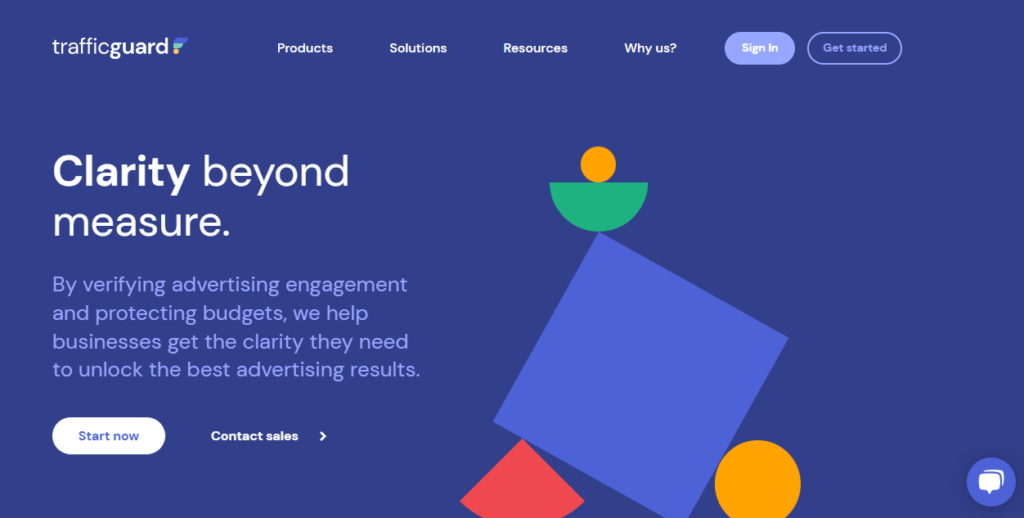
Digital ad fraud is identified, reduced, and reported by TrafficGuard before it affects your advertising budget. TrafficGuard, which is embedded in the advertising process, analyses impressions, clicks, conversions, and events to reduce ad fraud at the point of earliest reliable discovery. Their proactive strategy helps you scale and optimise your advertising with confidence while keeping your performance data clean.
TrafficGuard, founded in 2015, is a division of Adveritas Limited (ASX: AV1), a company with global operations and a listing on the Australian Securities Exchange. Leading international companies including super-apps Rappi and GoJek, big game developer Glu Mobile, mobile ad agency MUV, and eCommerce goliaths Bukalapak and Centauro use TrafficGuard to secure their ad budget.
By nature, TrafficGuard is surgical, depending more on statistical invalidation than broad blockage. Their methodical approach reduces false positives and safeguards your legitimate traffic. Their technology places a strong emphasis on transparency, providing you with explicit justifications for every invalidated engagement as well as the ability to grant agencies and traffic sources access to reporting on their traffic.
This improves advertising performance by allowing your supply chain to optimize campaigns in real-time rather than wasting time mailing spreadsheets and manually reconciling media volumes.
Key Features:
- Three levels of fraud prevention
- Prevent fraud and invalid traffic at the level of each impression, click, and event
- Transaction-level exports and fine-grained reporting
- To promote optimization, traffic suppliers will receive dedicated reporting
- Machine learning is equipped to recognize and approve fresh fraud schemes as they appear.
2. Adjust:
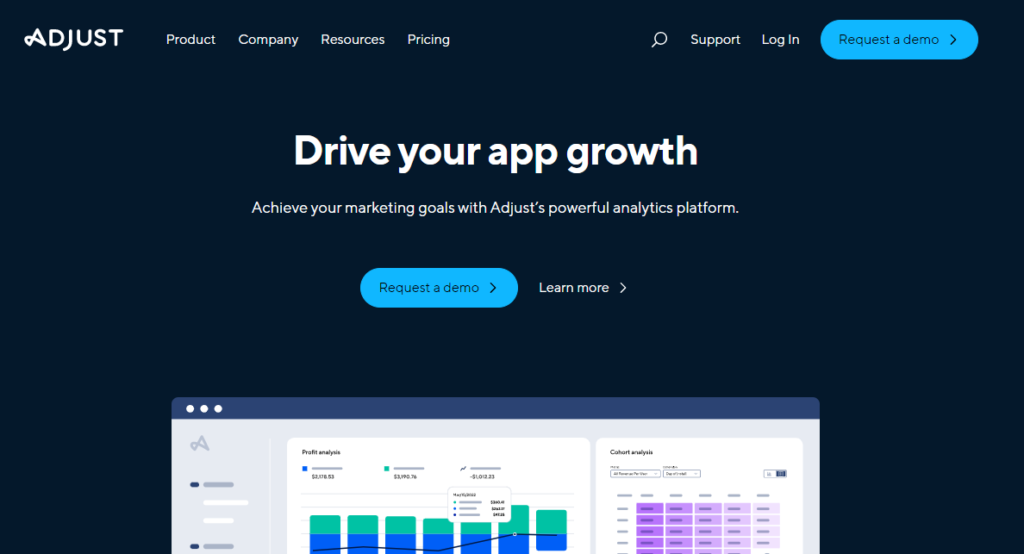
Adjust helps you stop fraudulent mobile advertising. By inducing fraudulent installs, clicks, traffic, and impressions on mobile apps and websites, scammers attempt to steal from advertising budgets. Advertisers pay for all of these dishonest methods, and in return, they receive misleading data that prohibits them from contacting actual app users and precisely focusing on their target audience.
Adjust offers a suite of tools for advertisers to use to identify suspect IPs associated with phoney installs, get rid of fraudulent clicks and hyper-engagement, and block click spam in order to assist avoid this.
A complete set of ad fraud prevention technologies are offered by the Adjust Fraud Prevention Suite (FPS), which prevents mobile ad fraud. Adjust focuses on rejecting bogus signals that fraudsters use to steal advertising spend rather than targeting devices and people like the majority of other fraud detection services, building a solid defense against ad fraud while passing on real traffic and installs.
And, while it’s used by Yelp, Spotify, and SoundCloud, to name a few, Adjust is still a small-business product that’s basic in its concept and thorough in its performance.
Key Features:
- Automatically assesses and adjusts to traffic trends
- Automated marketing built-in.
- Access to raw data is unrestricted.
- Trustworthy prevention of fraud.
- Consolidates marketing initiatives.
- Excellent clientele service.
3. Performcb:

Although Performcb is not a solution for outright fraud prevention, it does provide some significant ad fraud protection. The business’s official business strategy is pay-for-results, and it aims to assist brands in increasing their consumer base through digital media.
Your ad budget is safeguarded by the company using proprietary technologies. This takes the form of PerformSHIELD, a collection of anti-ad fraud solutions. These instruments are controlled by intricate algorithms, some of which are rule-based and others that use machine learning. The business claims that PerformSHIELD automatically optimizes your campaign while aggressively detecting ad fraud.
You, the marketer, can establish guidelines to control the tools. They can be applied for a number of purposes, such as confirming your target market and traffic as well as enforcing your terms and conditions.One benefit of using Performcb as a whole is that its main objective is to bring you more clients. While not an afterthought, ad avoidance is really the icing on the cake of an abundance of client acquisition options.
Although the pricing is a little different in this case, it is still far more flexible than what the prior options provide. A complicated cost-per-action payment model is provided by Performcb. For a click, interaction, lead, install, or sale, you can pay.No matter the activity you choose to pay for, ad fraud protection is always included, thus this tool has a lot to offer in terms of marketing and audience development.
Key Features:
- Brand Protection & Compliance
- Patented Technology & Innovation
- Experienced Account Managers
- 24/7 support
4. AppFlyer:
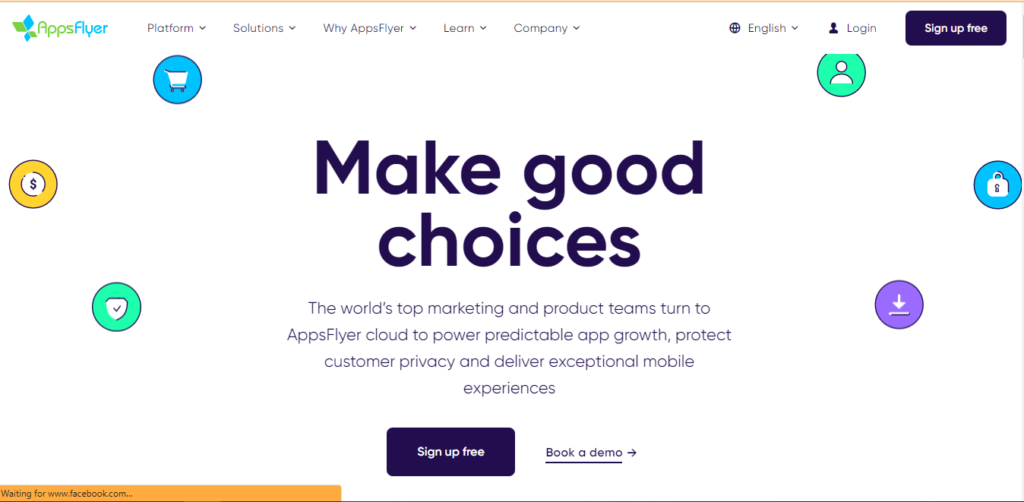
Protect360, an anti-fraud solution from AppsFlyer, offers thorough attribution fraud protection to app marketers before, during, and after the installation. Marketers have a multi-layered defense against all forms of mobile ad fraud thanks to the use of AppsFlyer’s distinctive attribution database scale, machine learning, and biometric behavioral analysis.
Your budget is protected with in-app and CPA security, post-attribution fraud detection, bespoke validation rules, and real-time protection.
Deep linking creates chances to boost sales, installs, and LTV. Dedicated deep linking features like flexible use case deployment, individualized user onboarding, and conversion optimization can be advantageous to you.
When you begin with the Basic subscription, AppsFlyer is accessible for a 30-day trial period. On request are the prices.
With a range of comprehensive measurement and analytics solutions, AppsFlyer, the leader in worldwide attribution, enables marketers to expand their businesses and innovate. AppsFlyer uses a customer-centric strategy to assist 12,000+ brands and 8,000+ technology partners every day in making smarter business decisions. AppsFlyer is built around privacy by design.
Key Features:
- Integration with a wide range of marketing platforms that is quick and thorough.
- With the help of OneLink, you may deep link leads from all of your activities.
- Attribution retargeting.
- Complete command over IOs.
- Granular installation attribution for all apps.
- Dashboard with an overview at a glance.
- Dynamic reporting
- Editor with drag and drop.
5. HUMAN (Formerly White Ops):
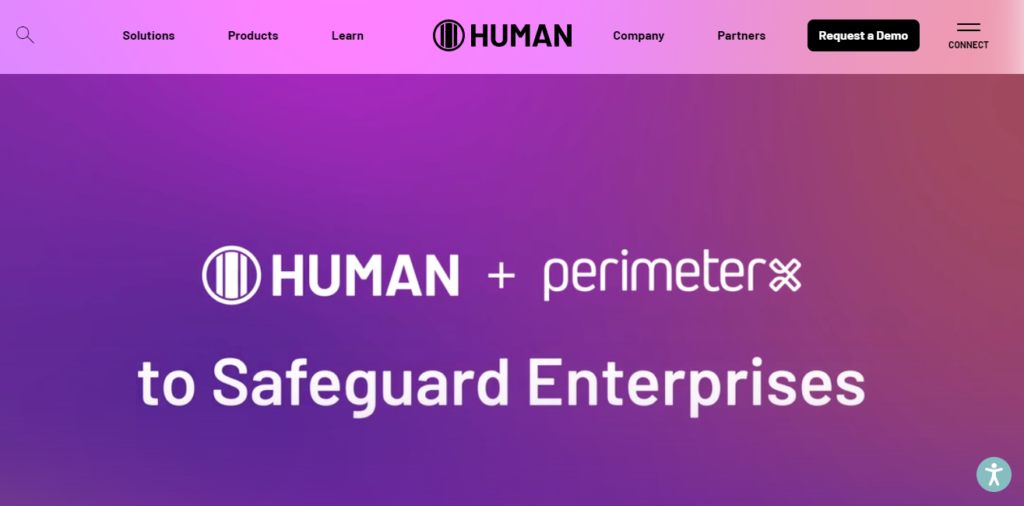
White Ops is a cybersecurity business that offers digital publishers and advertisers defence against ad fraud and related threats. Despite was founded in 2012. White Ops was just given MRC accreditation for sophisticated invalid traffic detection in 2016.
White Ops’ two primary products are MediaGuard and FraudSensor, and the company has previously collaborated with The TradeDesk, Videology, and TripleLift. By removing non-human traffic from publishers’ inventory and preventing specific types of ad fraud, these tools allow publishers to sell their inventory without worrying about being blocked.
White Ops also works in industries like travel, retail, financial services, and web security in addition to the ad tech sector. A well-known anti-fraud company is WhiteOps, which has assisted criminals be expelled from the platforms they were utilizing to carry out their crimes and revealed various fraud rings.
White operations can collect information on the network, device, software, application, and user settings using innovative method to find technical signs of penetration. For each engagement, White Ops gathers an average of 2,500 signals.
In addition to being pro-human, White Ops is also pro-privacy. Without following people, their privacy-conscious code finds bots. And that privacy-focused strategy has helped them win their partners’ trust and expand significantly on a worldwide basis. Every day, their code is running in many websites and apps, giving a wider online presence than any anti-virus or threat detection platform.
Key Features:
- Application Security
- Bot Management
- 10 trillion interactions per week
- 2,500 dynamic device, network, and behavioral signals distributed over 350 algorithms.
- 24/7 access to user-level attribution
6. FraudScore:
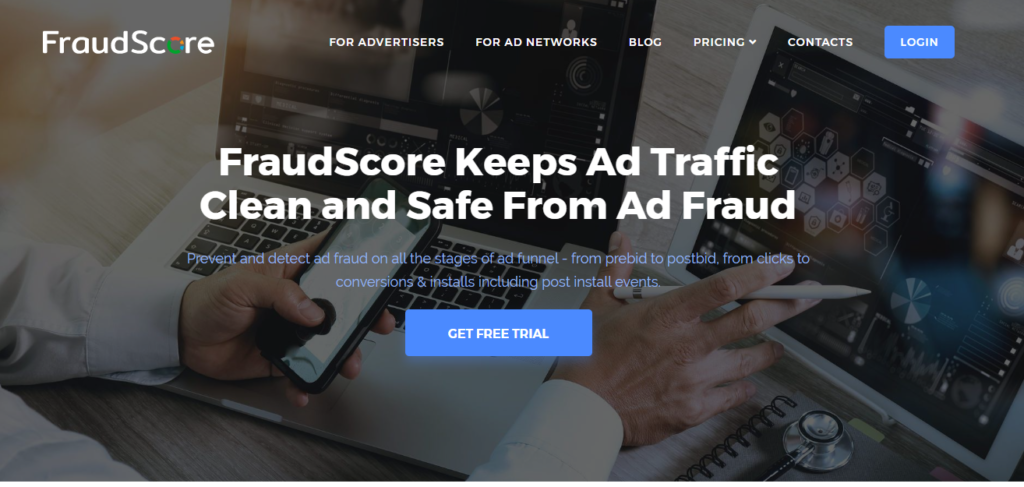
FraudScore is a free anti-fraud solution created by a group of ad fraud specialists, data scientists, and digital marketers. Since 2016, industry leaders have trusted FraudScore, which protects against ad fraud in all its forms and works with both mobile and desktop traffic.
FraudScore utilizes a process known as the “fraud score” in place of a binary decision such as “fraud” or “nonfraud.” Each install or conversion, channel, traffic source, offer, etc. receives a unique fraud score, which is an assessment of the likelihood and seriousness of ad fraud with a thorough justification of any fraud trends discovered. This distinct method offers clients a trustworthy technique to develop solid fraud cases and defend their positions for each event, while also leaving room for negotiation.
FraudScore is a full-stack technology for detecting ad fraud at every stage of the ad funnel, from pre-bid requests to impressions and clicks analysis to installs, conversion, and event scoring.
It examines both web and mobile traffic and addresses every stage of the sales funnel. Additionally, it’s simple to combine it with currently available solutions; using platforms like AppsFlyer, FuseClick, and Adjust, it usually takes five minutes or less.
Key Features:
- For accurate fraud detection, 150+ metrics have been examined.
- Detects fraud at all levels of conversion.
- SafeClick prevents click fraud in real time.
- New fraud trends are identified by machine learning algorithms as they emerge.
- Reports on interactive fraud.
- Every account comes with a personal manager.
7. Branch Metrics:
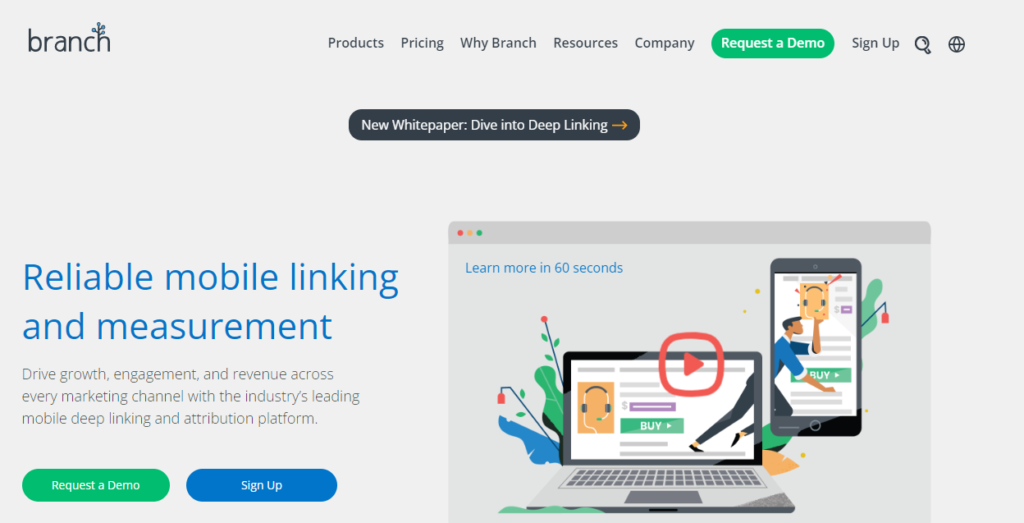
Branch Metrics brings a sophisticated ad fraud detection approach to the table. Rather than use common fingerprinting technology, it leverages its massive global identity network, which comprises Branch personas, to detect ad fraud.
The branch is a cross-platform attribution and linking platform used by 40,000 of the world’s best mobile businesses to integrate mobile measurement and user experiences across devices, platforms, and channels. The branch uses deep linking, user routing, attribution, mobile ads, and customized app experiences to enhance mobile conversion, retention, and engagement.
Anyone who wants to explore its features can do so with the help of the basic demo version. In addition, Branch Metrics has two pricing tiers. Billing might cost anywhere between $59 and $200 per month, mostly depending on your traffic volume.
Key Features:
- Campaign Analytics
- ROI Tracking
- A dedicated account manager.
- A filter for attribution sources.
- Retargeting via any of your partners
8. Singular:
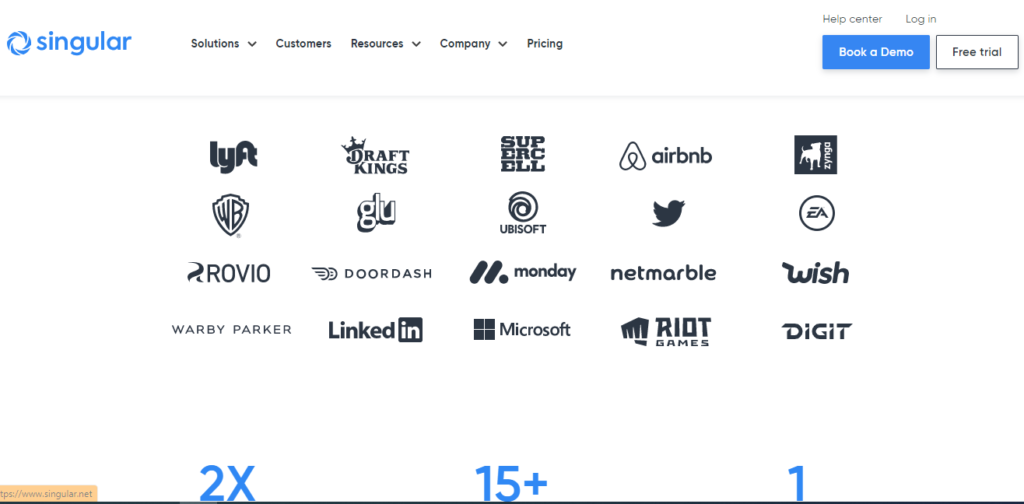
Singular safeguards your ad spending against fraud with a system designed and maintained by a highly experienced team of scientists committed to remaining one step ahead of ad fraudsters and their developing attack strategies.
Through the use of Singular, you may create unique rules that are appropriate for your apps and tailor your fraud approach. For proper measurement and reporting as well as to avoid budget wastage, make sure to eliminate fraudulent traffic in real-time, prior to attribution.
Singular enables marketers to achieve exactly that by offering a comprehensive perspective of marketing ROI through next-generation attribution, full-funnel marketing data, and best-in-class fraud detection.
With Singular’s open integration framework, you can track and report on all the channels you use, including cross-platform performance across applications, online, SMS, referrals, email, and TV. Utilize leading cost aggregation and attribution to analyze ROI and unlock marketing performance for each campaign, publisher, creative, and keyword.
With a singular, you are able to report on acquisition and re-engagement across platforms with deep links, web-to-app, and cross-device attribution, track and analyze across the whole user lifecycle. Singular enables you to keep your ad budgets focused on real users and prevent misreporting, block more fraud using more detection techniques, and pre-attribution fraud rejection.
Key Features:
- Fraud detection
- Mobile Attribution
- Benchmarking
- Complete review of marketing RIO
- Cross-platform Analytics
9. mFilterIt:
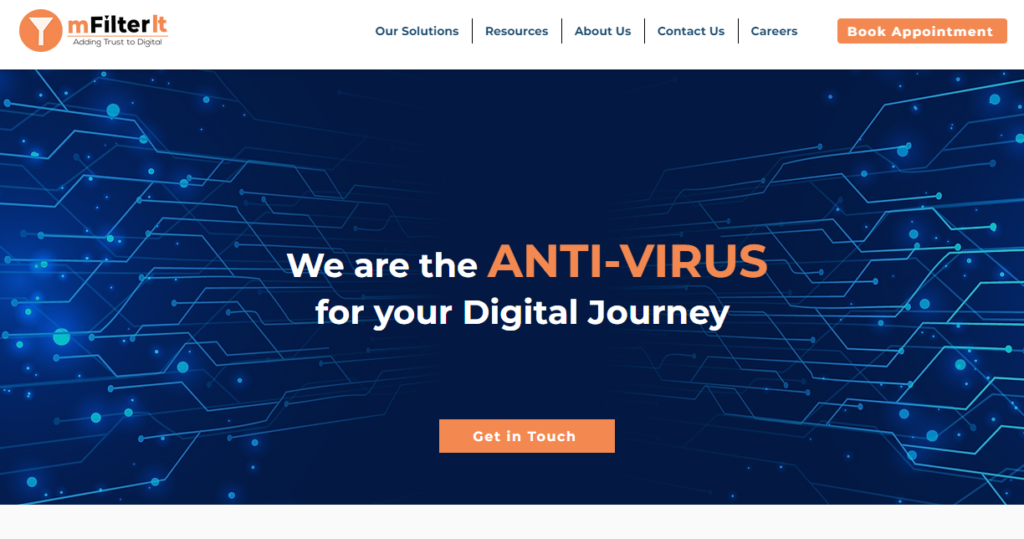
In terms of identifying and stopping ad fraud in apps, mFilterIt is a pioneer. Their solutions are supported by the capabilities of AI, ML, and data science and are trusted by recognized marketers all around the world. mFilterIt has aided 500+ clients in 15 countries as part of its aim to bring trust and transparency to the world of digital advertising.
They have helped organizations save more than $400 million by providing them with a full-funnel approach and log-level fraud data, allowing them to make strategic marketing decisions. Gurgaon, Haryana, serves as the company’s headquarters. It was established in 2015.
The Ad Traffic Validation solution from mFilterIt is a full-service ad-fraud protection suite with an integrated infrastructure that seeks to increase ROAS. This group of technologists and data scientists constantly develops new techniques and methods.
They provide reliable traffic analysis & fraud detection solutions for both app and online campaigns, protecting digital expenditures across all media platforms. They offer comprehensive operational service support to help customers achieve a higher returns on investment.
Key Features:
- An algorithm based on machine learning is being used to track repeat users and bogus devices.
- Identifies installations and events coming from compromised devices, botnets, and IP addresses that have been blacklisted.
- Identifies unique device characteristics for authenticity.
- Examines data patterns from each event to find behavioral aspects.
10. Virus Positive Technologies:
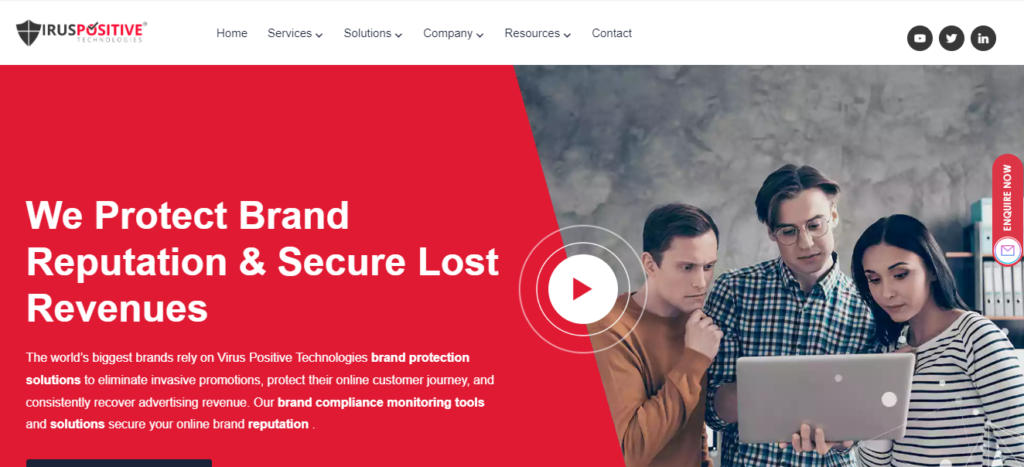
The market for managing affiliate fraud, protecting brand reputation, and preserving the online customer experience is being pioneered by Virus Positive Technologies (VPT).
Your brand is watched over and in compliance with VPT’s brand compliance monitoring solutions & services.
The top brands in the world rely on VPT’s brand protection solutions to get rid of intrusive advertisements, find affiliate fraud, safeguard their online customer journey, and reliably recover advertising revenue.
Their fraud detection solutions & services include detecting and safeguarding your brand against affiliate fraud in your network. They keep tabs on your network’s affiliates’ marketing initiatives and check for compliance with the terms of the network agreement.
Key Features:
- Brand Monitoring Instruments
- Utilizing predictive analytics, create metrics for flagging violations
- Monitoring of a three-tier affiliate network, including pre-joining, payment threshold, and metrics and data-based reviews
- Customized dashboards for reporting & data visualization
- Preventing the hijacking of consumer journeys
To Sum up:
The number of click fraud events is on the rise globally, and you need to utilize all the preventive steps to remove such threats. You are now aware of the most effective tools for removing click fraud from PPC ads after reading this post.
Choose any option from the list so you can avoid any fraudulent actions around your ad drives and acquire quality traffic that has the potential to convert.
To defend your online business, you should also utilize fraud detection and prevention solutions.

